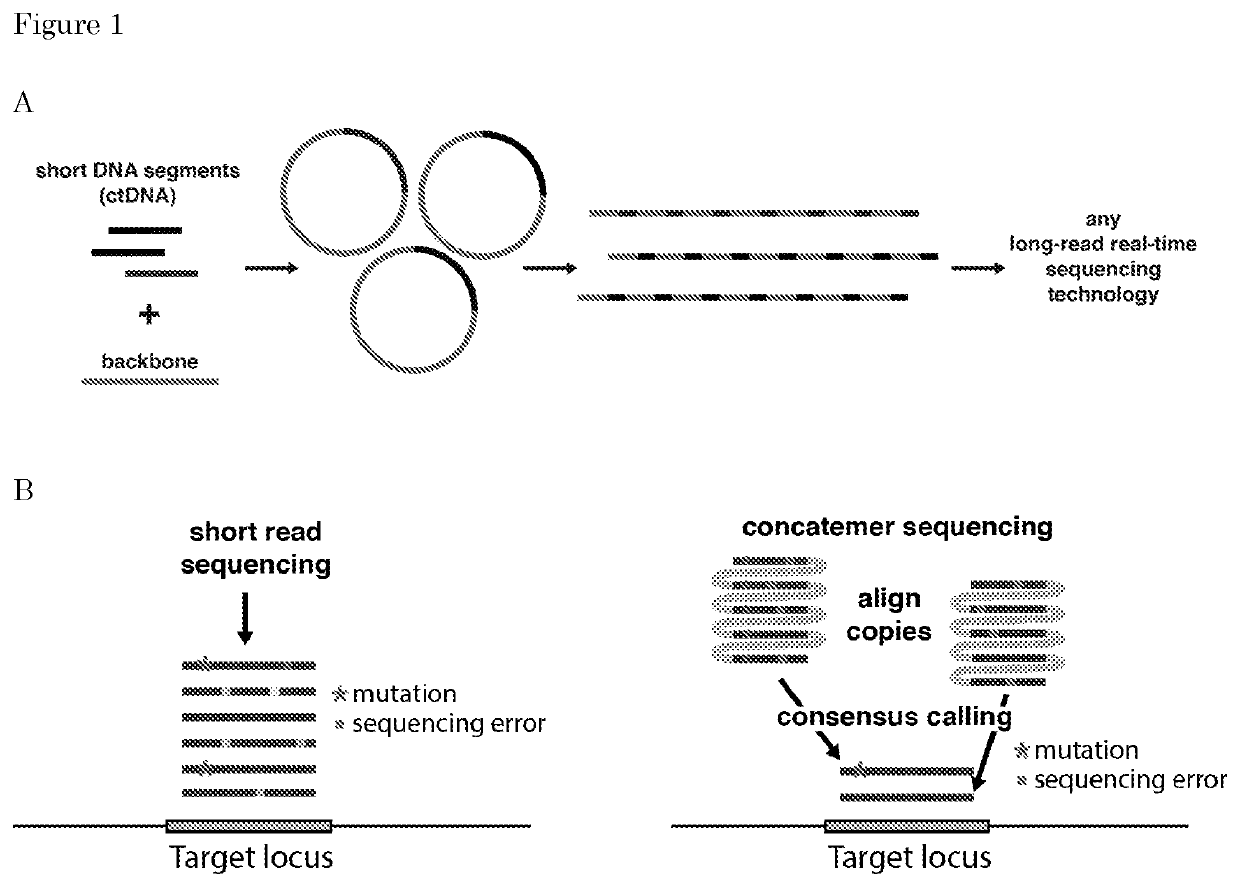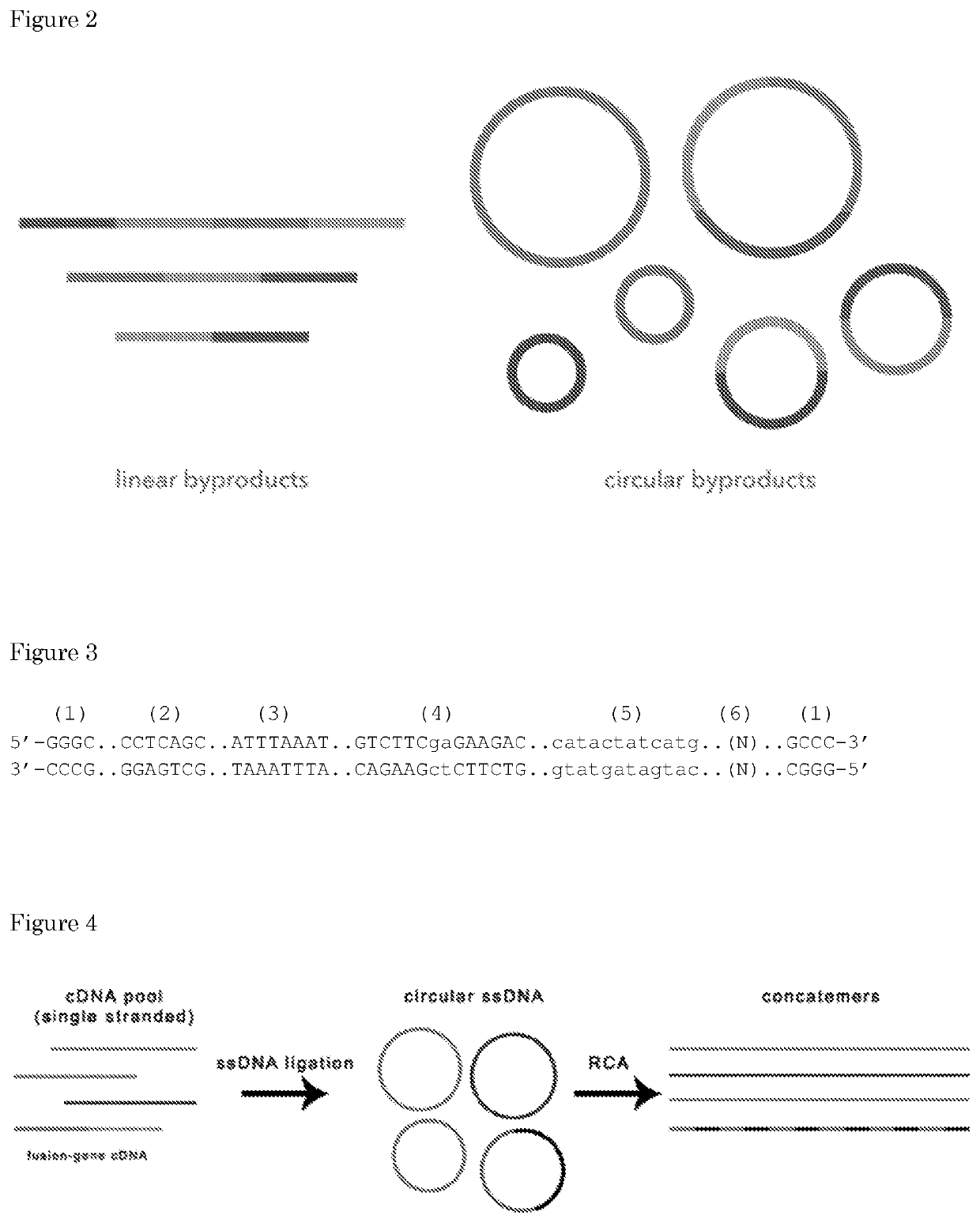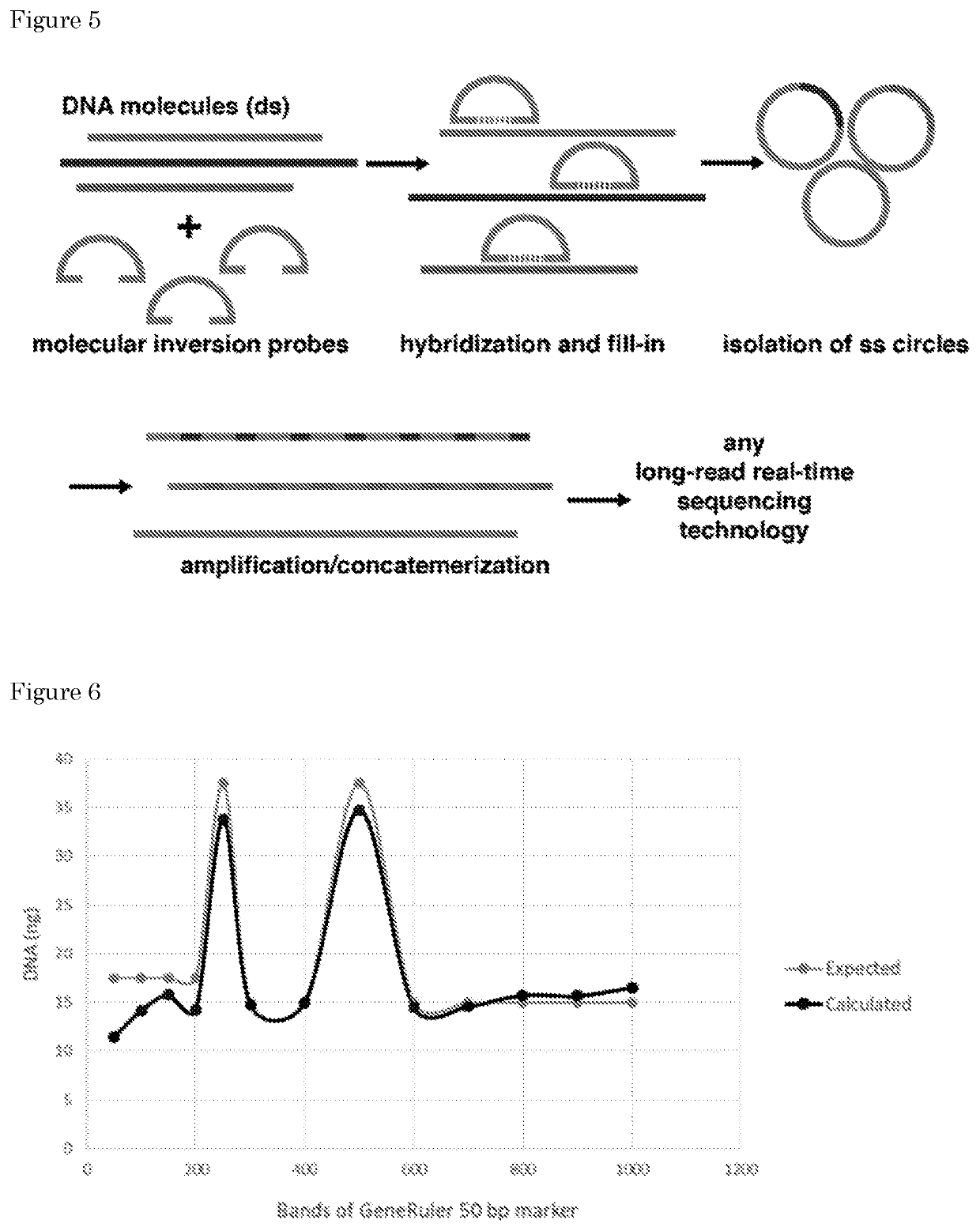Methods for preparing nucleic acid molecules for sequencing
a nucleic acid and sequence technology, applied in the field of methods for determining the sequence of nucleic acid molecules, can solve the problems of inability to determine whether a change represents an error or a true mutation, and the sequence of short stretches of dna suffers from inherent error profiles,
- Summary
- Abstract
- Description
- Claims
- Application Information
AI Technical Summary
Benefits of technology
Problems solved by technology
Method used
Image
Examples
example 1
[0210]Materials and Methods
[0211]Methods are described herein that allow detection of genetic variations by sequencing of a nucleic acid sequences in a pool of nucleic acid molecules (DNA) like ctDNA (circulating tumor DNA), cfDNA (cell-free DNA), genomic DNA, RNA, products of the polymerase chain reaction (PCR) or other products.
[0212]In this process, a “product” obtained is a long (>10 Kb) linear dsDNA formed by multiple units consisting of nucleic-acid-backbone copies. The concatemerization / multimerization of such a unit is necessary to discriminate the detection of a real genetic variation from a sequencing error. In fact, in the case of rare genetic variations, that occur in less than 1% frequency within a pool of DNA molecules, direct sequencing, e.g., short-read sequencing cannot be applied anymore, because the sequencing error rate is higher than the mutation frequency. Using the method described above, the same rare sequence (genetic variation) is represented multiple times...
example 2
[0431]Sequencing of Concatenated DNA Molecules
[0432]A PCR product was cloned covering position 17:7578265 of the TP53 gene into pJET (Materials and Methods, section 9). Following bacterial transformation, a single colony was picked and plasmid DNA was isolated to confirm the presence of the TP53 insert (data not shown). Next, a rolling-circle amplification (RCA) was performed on the isolated plasmid using phi29 polymerase and random hexamer primers (Materials and Methods, section 9). A high-molecular weight RCA product was obtained with a size>20 kb as estimated by gel-electrophoresis (FIG. 8A). The product was used as input for a 1D library preparation for sequencing on the Oxford Nanopore Technologies (ONT) MinION instrument and the resulting library was sequenced for 48 h according to manufacturer's specifications. A total of 16,248 sequencing reads was generated for this sample, with an average read length of 5.7 kb (FIG. 8B) and 2,083 reads longer than 10 kb. Nanopore / MinION se...
example 3
[0490]Materials and Methods
[0491]Circularization and RCA amplification of short PCR oligos.
MaterialsBackbone (BB)BB2.4 with barcode10-50 ng / μl 243-244 bpInsert (I)blunt PCR amplicon10-50 ng / μl 100-250 bpCutSmart Buffer10X(supplied withNEB#R0629)ATP10mM(NEB#P0756)dNTPs10mM(ThermoFisher#R0192)T4 Ligase400U / μl(NEB#M0202S)SrfI (Restr. Enz.)20U / μl(NEB#R0629)Plasmid-Safe Buff.10X(Lucigen#E3101K)Plasmid-Safe Enz.10U / ul(Lucigen#E3101K)Annealing Buffer5X(50 mM Tris @ pH7.5-8.0, 250 mM NaCl,5 mM EDTA)Phi29 Buffer10X(supμlied withThermoFisher#EP0091)BSA10mg / ml(NEB&B9001)Pyrophosphatase0.1U / μl(ThermoFisher#EF0221)Phi29 DNA Polym.10U / μl(ThermoFisher#EP0091)Exo-Res. RND Primers500μM(ThermoFisher#SO181)Wizard SV Gel and PCR(Promega#A9282)Clean-Up System
[0492]The backbone must be phosphorylated, either producing it via PCR using phosphorylated primers or using phosphorylation with PNK of a non-phosphorylated PCR product or synthetic DNA duplex (T4 Polynucleotide Kinase).
[0493]The insert must be dep...
PUM
| Property | Measurement | Unit |
|---|---|---|
| Volume | aaaaa | aaaaa |
| Volume | aaaaa | aaaaa |
| Volume | aaaaa | aaaaa |
Abstract
Description
Claims
Application Information
 Login to View More
Login to View More - R&D
- Intellectual Property
- Life Sciences
- Materials
- Tech Scout
- Unparalleled Data Quality
- Higher Quality Content
- 60% Fewer Hallucinations
Browse by: Latest US Patents, China's latest patents, Technical Efficacy Thesaurus, Application Domain, Technology Topic, Popular Technical Reports.
© 2025 PatSnap. All rights reserved.Legal|Privacy policy|Modern Slavery Act Transparency Statement|Sitemap|About US| Contact US: help@patsnap.com



